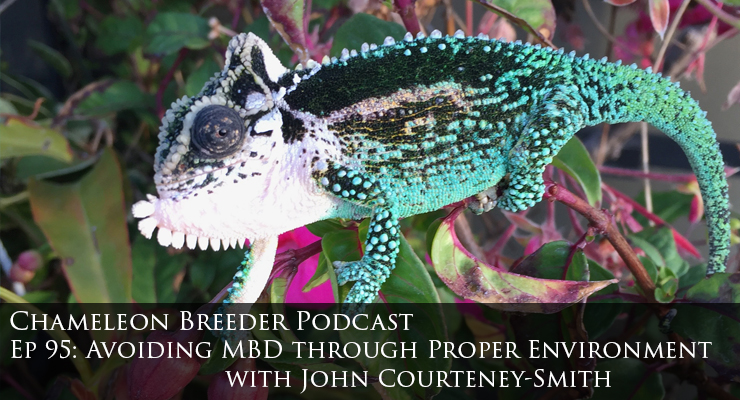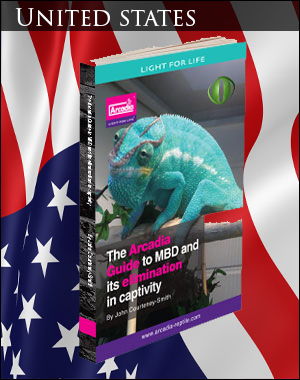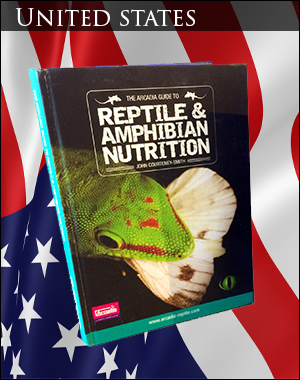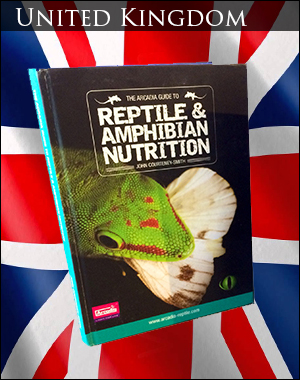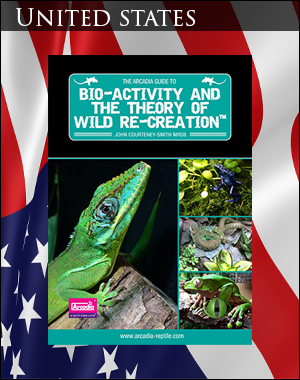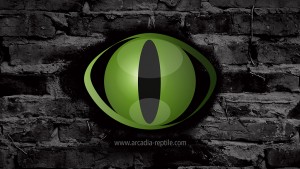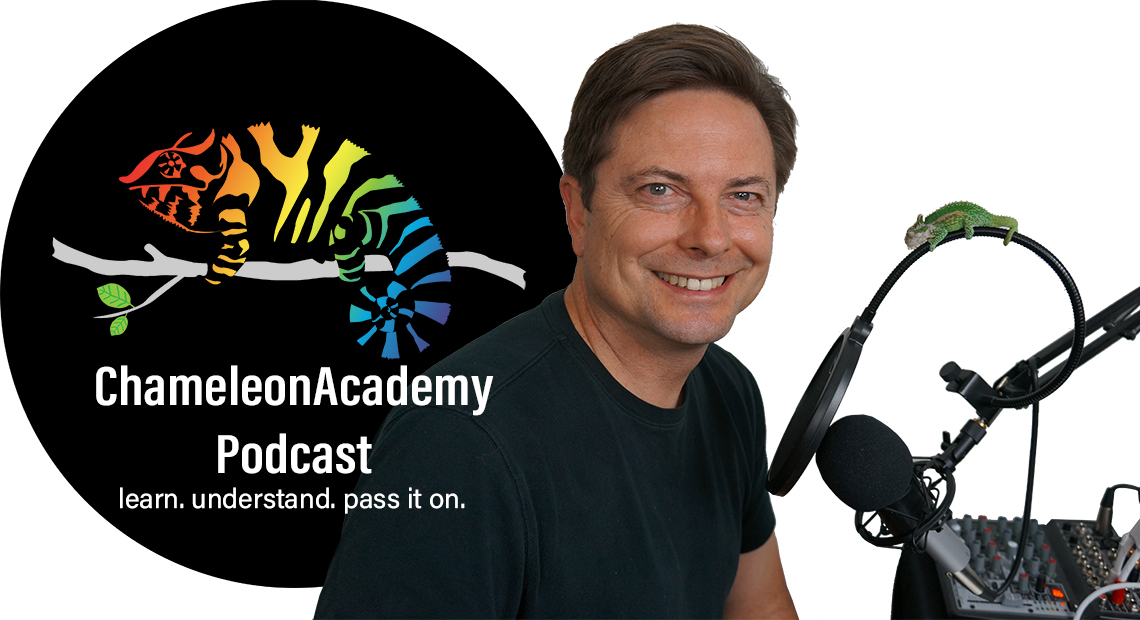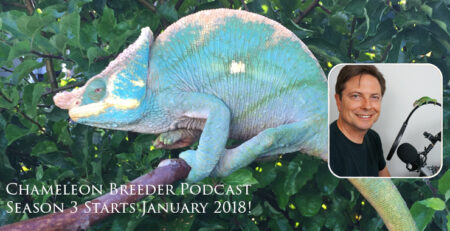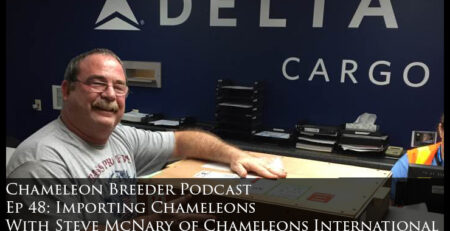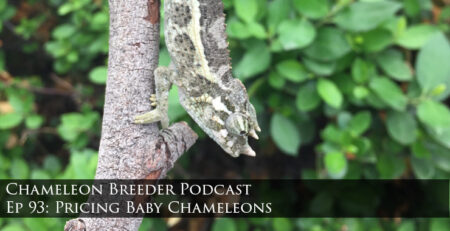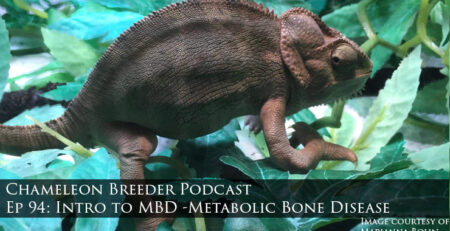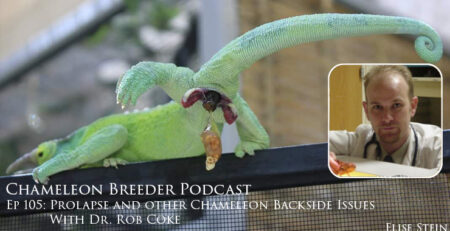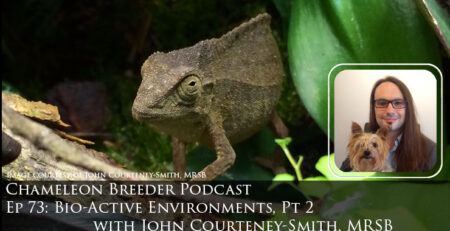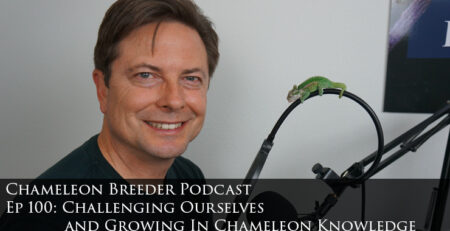Ep 95: Avoiding MBD Through Proper Environment
Nutritional disorders in chameleons, like Metabolic Bone Disease, are a result of us not providing natural conditions. Today, John Courteney-Smith, MSRB joins me to discuss preventing illness through proper environment.
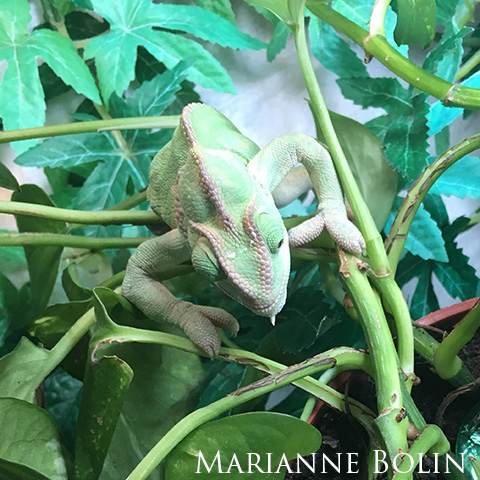
Books by John Courteney-Smith, MRSB
John’s first book is The Arcadia Guide to MBD and its Elimination in Captivity which goes over the very important need to understand the UVB/D3/Calcium cycle. GET THIS BOOK!!
In the US, you may purchase a physical book from Light Your Reptiles or get a kindle edition from Amazon.com. Click below for purchase.
Kindle Book from Amazon of “The Arcadia Guide to MBD and its Elimination in Captivity“
The second book is a thick one and goes over vitamins and minerals and their value to reptiles. In the US, you may purchase a physical book from Light Your Reptiles or, in the UK, you can head on over to the Northampton Reptile Centre.
The link below takes you t0 The Arcadia Guide to Bio-activity and the Theory of Wild Re-creation. from Light Your Reptiles.
Arcadia Reptile has earned their place in the reptile community by producing quality products. Their website arcadia-reptile.com is an excellent resource on reptile lighting.
Thank you John for coming on a sharing with us!

Audio Transcript (more or less):
Welcome, chameleon wranglers, to episode 95 where we are continuing our discussion into Metabolic Bone Disease, or MBD. MBD is important enough to get multiple episodes worth of attention because it is so prevalent in our hobby of chameleon keeping. The good news is that it is preventable and that education is readily available.
But first, I owe you an update. As most of you know, this episode is just one of a series of episodes dedicated to MBD education. As part of this series we are following the story of Sweet Pea, a female Veiled Chameleon with MBD that went home with Marianne Bolin. We are following this in real time and I will give you an update in each of the MBD series episodes. While I am not sure how this will end, Today I bring to you some surprisingly good news. She was climbing the walls of her screen cage. Listeners of this podcast will know that screen crawling is a sign of an inadequate cage and that the chameleon wants to get out. It does not mean it wants to play. It means it doesn’t like where it is. I will say this is the first time I have been ecstatic to hear about a chameleon screen climbing! The fact that Sweet Pea has that kind of ability makes me very happy.
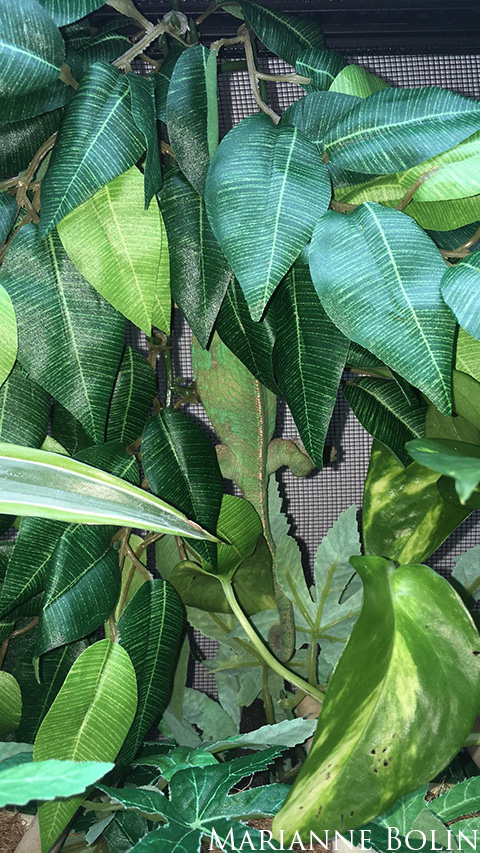
Marianne has been diligent in sharing the progress with her being able to shoot her tongue and chew food. So far she shoots her tongue at dirt, though it seems deliberate. She ignores the crickets. Hopefully by next episode we will know if she is able to chew her own food. At this point she is being hand fed a liquid diet of carnivore care. I am pleasantly surprised by being able to share good news. But, it is actually looking like she is responding well to her treatment plan!
So let’s get to today’s lesson on MBD. We are going to talk about the environment. We tend to simplify MBD into a lack of calcium and our understanding may expand to D3 and UVB. But let’s expand our view of the situation. MBD is caused when the chameleon’s environment is lacking one or more components they have developed to need. MBD is also caused by the correct components out of balance. But not only MBD, but a host of nutritional disorders! MBD is only one. So how do we avoid MBD or other nutritional issues. The answer is to become obsessive about learning what the natural environment for your species of chameleon is! To this end, there are few better tour guides than John Courteney-Smith, who is a member of the Royal Society of Biology in the UK. John also heads the reptile and amphibian research at Arcadia Reptiles which manufacturers the Arcadia brand reptile lighting and the Earth Pro-A family of supplements. John is the author of four books on creating a more holistic approach to reptile husbandry and all of these will be listed in the show notes. Now, at this time, I’d like to focus on how we can care for our chameleon through its carefully crafted environment. John Courteney-Smith has been an enthusiastic supporter of this podcast and has been incredibly generous with his time. So let’s welcome John to the podcast once more.
Bill:To prevent metabolic bone disease what kind of balance and relationship do we need between the lighting and the supplementation and the heat?
John Courteney-Smith:We’ve still got a long road to walk down in terms of husbandry and technology before we have perfection. But the technology that’s available to us now and the products that are available to us now can pretty much allow you to keep your animal and be quite confident that you can maintain that animal as being free from MBD for its life, if you follow a few husbandry laws. Now what we have to do is always start with a decision.
The decision that you need to make is, do I keep a reptile because I want to have, exclamation mark, funky pet in the house and I’ll keep it until it dies and get a new or do I want to keep a reptile and see it do very well and I’m willing to invest in it and I want to breed them and I want to do it, and all of these things. Predominantly the listeners of your podcast are going to be people that are actually interested in reptile keeping.
We would always start with that decision. Yes, I want to keep this animal properly and I’m willing to make the changes that come along within the next periods of years to constantly improve its health. You can then start to create enclosures and systems of care that will help to prevent nutritional disease. MBD, metabolic bone disease, is one tiny aspect of nutritional disease. Most nutritional diseases will end up with an imbalance and or disease or improper function within the skeleton because the skeleton is all important within the functionality of the biological function of an animal.
If the health of the skeleton is wrong, the health of the animal is wrong. Okay, we’re down to brass tacks. We’re really looking at the intricate nature of how an animal works, how it’s provided for and how to keep it healthy. If we have systems in place through external and internal energy that supply for the skeleton, we can pretty much be assured if you maintain that the rest of the animal will function correctly. With the provisos that you don’t do something dopey like give it 25 million IUs of vitamin A five days a week. We have to be quietly sensible as well. You would always start with the species that you want to keep. Never buy an enclosure and then go and buy and choose your animal.
The enclosure is always bought around the animal. Now, please don’t misunderstand me. I’m not saying go and buy an animal and then go and buy an enclosure. What I’m saying is choose the species that you want to keep. Make a mental note, I have decided that I am going to keep a Jackson’s chameleon. (Bill: Excellent choice!)
You can then start your research process. Read books, go online, look at what other keepers are doing, go on the Good Chameleon Keeper and Facebook groups and forums.
Ask keepers, put a decent amount of time in place where you can research and come to a general consensus of how these animals live and how people are keeping them and how they’re keeping them correctly. That will give you a decent base to decide what type and size cage you need or enclosure you need to keep that animal healthy and well. We build the cage around the needs of the animal. Once you have decided the type
and size of cage, you can start to look at your decorative style.
Are you going to be one of the old guard and have branches and fake plants or are you going to embrace this New World of bioactivity and live plant growth and designing an enclosure that’s going to have natural branching and live plants and how you’re going to design that and how’s that going to look. You keep this all in your mind, you can write it all down but you’re starting to build up a picture of the ecosystem that you’re going to create. You can then start to put your cage together.
Because it’s only when the cage is built and you can see the practicality of where your high perches are and where your plants are and the depth and width and where your shade and light is going to go, that you can choose your lighting system. We might quite accurately say that you can keep a male Jackson’s chameleon in an enclosure that’s two foot by tow foot by three foot, or you could have three foot by three foot by four foot by five foot, whatever you wish to do. The lighting choice for that actual animal is going to be different, could be different, for every single cage and cage type and decorative style that you have.
Decorative style will increase or decrease the distance between the top, the mesh if you’re going to use a mesh top at the top of the enclosure and the point of the vivarium where the animal can climb up to. It’s at the shortest point between the top of the vivarium and the back of the animal. Well, once you know all that you can start to look at lighting. Now, of course we’ve spoken about the importance of UVB and UVA full spectrum terrestrial daylight, the vast amount of work that is going on at the moment within infrared.
Sadly we’ve concentrated on the importance of UVB and UVA for so long that we’ve forgotten to look at the great importance of infrared and the terrestrial wavelengths of infrared and how they impact life and provide energy into animals. We know we need to provide a visible light source with a balance of UVA and UVB and we know we need to provide a heat source in most enclosures unless you’re lucky enough to live in the wild environment that your animal happened to come from. You can then start to look towards the kinds of energy that your animal needs to be exposed to to be able to go through its biological cycles.
In terms of infrared, infrared will provide energy directly into the animal, the energy that it needs to function for its heart to beat, for it to be able to move, for it to be able to feed, for it to be able to go through its cycles. Infrared is heat. You can start to look at the thermal gradient, the type of temperature that your animal needs to be exposed to to be able for it to go through that function, to have that functionality, what level of heat or energy does it need to have assimilated before it can move and function properly.
You can start to look at the UV index as available to that animal in its position within its environment. Using the Ferguson Zone is a good place to start. It’s not always totally accurate for every species because Ferguson tends to look at whole environments rather than species within that environment. You need to start looking at the needs of your species. Where is it found in its environment, what’s its daily habits, how much time does it expose itself for, what time of day does it expose it to. What’s its usual habits? Is it predominantly shaped well, is it predominantly full exposure.
This is where dear Petr’s (Petr Necas) work in Kenya has been so valuable for me even in my position to be able to think back information constantly about where he’s finding these Jackson’s chameleons and what times of days they have been exposing themselves and what level of sunlight. We can build up a picture using this wild data to come to an informed choice of how much energy within heat and ultraviolet that an animal needs to be or can choose to be exposed to, to go through all of its cycles. You will then choose a UV lamp of sufficient quality that you can trust that will project that level of energy to the depth within your enclosure where your animal is going to be.
Now, that’s a little bit of guesswork. We have to use UV index meters, good quality index meters. Please, don’t use the ones that you can buy from online auction sites for $5 or so. They really aren’t very accurate. Using something like the Solarmeter 6.5 will enable you to take an instant reading at any point in your enclosure to check the level of energy that’s available for your animal. You can then use some non-contact thermometers, digital thermometers, to measure the heat that’s available at the very top. If you imagine particularly for chameleon keepers where we tend to have tall cages.
Your basking zone is always at the top of the vivarium because that’s where all yourlighting is. Then, as they descend down into the vivarium, they are encountering ever-increasing amounts of shade or ever-decreasing amounts of energy through light. This is where they can self-regulate. They can come up early in the day and bask and energize themselves. You’ve checked the emission that’s coming from the lamp with your thermometer and index meter.
Once they’ve energized themselves, they can descend back into the canopy and move around and adjust their energy levels constantly during the day even by stretching out and putting a foot into a column of light that’s coming through the leafwork within your enclosure just to keep themselves topped up all the time. That theory of replicating the world, this ability now to be able to provide the appropriate wavelengths of light being energy, the ability to be able to measure that and to adjust it and to be able to decorate properly will provide for those particular items of energy supply in your animal.
You will know that, yes, I’ve got the correct index for this species, it can move around, it can self-regulate well, I’m using lamps that have proven to be safe. I’ve installed the correct wavelengths of infrared at a certain level and there’s a certain amount of heat and that enables the animal to go through its function and to survive and do well. You can then start to look at the ingestible forms of nutrition. Some people will understand why I use the word nutrition when I talk about decoration because your decoration is as important within the nutritional cycles as the energy that surrounds and the energy that is ingested.
We need to be providing enclosures where animals can climb and move around that they’re not forced to be sedentary all the time. Now, mental and physical enrichment are very valid parts of overall nutrition. You can light and heat and feed your animal as much as you want to. If that animal is forced into a life where it’s not moving, where it’s not running around that for animals that do that be it the dragons and such like, they become lazy, fat, obese, strain on the organs within the body. The organs aren’t able to utilize nutrition that you put in and around the animal and you end up with nutritional disease which could lead to MBD.
We have these two external layers of nutrition. Light from the whole spectrum, the environment that surrounds that animal which will help to bolster the energy that is around and that goes in and allow the animal to exercise enough so that its organs stay healthy and its mind stays healthy. Then, of course, you’re thinking about what you feed that animal, how you supply water to that animal. The times of day that you supply water to the animal. With regards to supplementation, the supplements are purely there to make up for that shortfall between the wild and the captive diet. We simply don’t have access to these species of animals or plants that the reptiles consume in the wild, nor do we have access to the physical mineral, vitamin content of those plants because they’re not being taken from that wild environment. We will always seek to feed live defrost plant diets, whatever species you’re keeping.
For chameleons, predominantly it’s live insects that we’re using and you guys will seek to buy as much variety in terms of insect species as you can within the country or state that you live. You will feed and gut load that live food. You will hydrate it. In some cases, you will heat that live food before you feed it on, and that will be a good base diet for your animal. It still will not be as the wild diet.
It can’t be because it’s restricted. We will then use the natural base hopefully, supplement powders to increase the mineral levels and the mineral balance that is missing from the water that we allow our animals to drink and is missing from the foods that they’re eating. We then start to look at expanding the diet. What can we buy in? What species of insect can we grow at home? Are there any natural foods that my animal would provide in a way that my animal would find in the wild? That can increase the variety.
We’re hedging our bets. We’re spread betting all over the place by including as many safe natural ingredients. Whether that’s mineral, whether that is organics, whether that’s meats, whatever it is, we are going to give as much variety as we can. Now, if you marry that informed choice of variety that goes in through the mouth, that comes in through water that is breathed in through humidity, as with the level of energy that surrounds your animal, you can be rest assured that you are doing the very best that you possibly can for it and the chances of going on to develop nutritional disease are as low as they can be at the moment.
Bill:What components do we know about, at least at this time, that need to be imbalance to make sure we avoid MBD?
John Courteney-Smith:If we want to talk about MBD with regards to skeletal mass and calcium reserves within the body, we know that we must have– we always used to talk about the calcium phosphorous ratio and vitamin D3. Actually, what we need to have is the UVB to D3 provision imbalanced providing the correct amount of D3 that your animal needs for the majority of the year and they need to have access to a balance of calcium, phosphorus, and magnesium.
Those three elements are the most important to be provided to allow calcium and phosphorus and magnesium to be put into the skeleton. Actually, all of the earth minerals need to be provided to do the job properly but if we want to concentrate on the top three, we’re looking at calcium, phosphorus, and magnesium. We can supply powders that will allow those to go in, in greater amounts into the skeleton.
To be absorbed into the skeleton. The D3 cycle is a cycle in many, many cycles, so you have to have access to D3, you have to have access to the elements, you have to have access to water, to heat, to light, to sleep and rest and you keep going through all of these cycles. Water is the glue of all life. If we under hydrate or improperly hydrate any species, particularly Chameleons, but any species. Every single provision that you put into your cage, be that light or nutrition will fall apart. Hydrate, we concentrate on UVB, we concentrate on calcium, we concentrate on this, that and the other, but actually, we forget the importance of some of the basics.
The correct provision of hydration and humidity is the glue of all life. If we get that wrong, your D3 to calcium cycle cannot complete and neither can any other cycle and nutritional provision within your animal. It’s just as important within that cycle, yes.
And with that we’ll have to bid farewell to John – at least for now. But let’s go to our chameleon keeping lives thinking about how we can bring our husbandry more in line with the natural state.
It is no surprise that everything in this world is interconnected. It is no surprise that missing an element or having elements out of balance will cause problems. It is up to us to passionately re-create as close to our chameleon’s natural environment as is possible. The closer we have the environment in balance the fewer health issues our chameleon will run into.
I recommend John’s books to anyone who wants to take their husbandry to the next level. We are knocking at the door of wide spread acceptance of effective lighting, more natural hydration methods, and a decrease in MBD. Let’s keep that momentum going in the right direction!

